Sciare in condizioni di neve variabili può essere complicato, ma non deve rovinarti la giornata. Che tu stia affrontando croste ghiacciate, POWDER profonda o un mix di tutto, l'attrezzatura e le tecniche giuste fanno tutta la differenza. Ecco l'essenziale:
- Neve Crostosa: Rimani centrato e usa curve rapide e decise per mantenere il controllo. Sci corti, come gli Snowfeet Skiblades (65 cm), aiutano nel controllo del bordo e nell'equilibrio.
- Neve POWDER: Distribuisci il peso in modo uniforme per evitare di affondare. Gli sci POWDER (99 cm) di Snowfeet sono ideali per galleggiare sulla neve soffice.
- Terreno Misto: Leggi la neve davanti a te e adatta la tua posizione secondo necessità. Snowfeet Skiskates (44 cm) sono perfetti per curve rapide e decise in condizioni imprevedibili.
L'attrezzatura Snowfeet si distingue perché è leggera, facile da usare e funziona con scarponi normali. Inoltre, non serve un equipaggiamento ingombrante per godersi le piste. Vediamo come affrontare ogni tipo di neve e perché gli sci più corti possono rendere lo sci più facile e divertente.
Come Sciare - Condizioni Nevose Variabili
Tipi di Neve e le Loro Sfide
Ogni tipo di neve porta con sé le sue stranezze e ostacoli. Sapere cosa ti aspetta può fare tutta la differenza, aiutandoti a prepararti mentalmente e fisicamente per le piste. Ecco uno sguardo più da vicino a come diverse condizioni di neve mettono alla prova le tue abilità - e come i prodotti Snowfeet* possono rendere la tua discesa più fluida.
Neve Crostosa: Superficie Dura, Discese Difficili
La neve crostosa si forma quando il sole ammorbidisce la superficie durante il giorno, solo per congelarsi solidamente durante la notte. Il risultato? Uno strato duro e ghiacciato che copre neve più morbida sotto. Questa miscela imprevedibile può farti scivolare dolcemente un momento e affondare inaspettatamente il momento dopo.
Gli sci lunghi tendono a faticare qui perché la loro lunghezza spesso significa che ogni punta incontra diverse densità di neve, rendendo il controllo difficile. Ma con i Snowfeet Skiblades* - disponibili nelle misure 65 cm, 99 cm e 120 cm - ottieni un design più compatto. Questo mantiene entrambi gli sci sulla stessa superficie, migliorando il controllo del bordo e la reattività. Inoltre, la loro lunghezza più corta permette curve più strette e veloci, così puoi evitare quei tratti crostosi senza affidarti a grandi movimenti ampi. Si tratta di rimanere agili e in controllo.
Neve POWDER: Leggera, Soffice e Insidiosa
La neve POWDER è il sogno - morbida, leggera e indulgente. Ma non è senza sfide. La POWDER profonda può compromettere il tuo equilibrio, specialmente se ti inclini troppo indietro, facendo affondare le punte degli sci e compromettendo il controllo.
Gli sci tradizionali da powder sono progettati per galleggiare meglio grazie alla loro costruzione più lunga e larga, ma possono essere difficili da gestire, richiedendo più abilità e forza. Ecco i Snowfeet Skiblades* da 99 cm. Il loro profilo più corto ti aiuta a mantenere l'equilibrio e rende più facile iniziare le curve, anche nella POWDER profonda. Che tu stia passando dalla POWDER alla neve più dura o stia intagliando nella soffice neve intatta, questi Skiblades ti danno il controllo e la fiducia di cui hai bisogno.
Terreno Misto: Un Po' Di Tutto
Il terreno misto è come una borsa a sorpresa di condizioni nevose - chiazze di ghiaccio, fango, sezioni compatte dal vento e magari anche un po' di POWDER, tutto in una sola discesa. Nessuna tecnica singola funziona per tutto, quindi la capacità di adattarsi rapidamente è fondamentale.
Qui è dove brillano i Snowfeet Skiskates* (44 cm). La loro dimensione compatta permette aggiustamenti fulminei, rendendo le curve precise un gioco da ragazzi, qualunque cosa la neve ti riservi. Che tu stia navigando tra punti ghiacciati e tratti fangosi o affrontando cambiamenti improvvisi del terreno, questi Skiskates ti mantengono in controllo, garantendo una discesa più fluida e sicura dalla cima alla base.
Perché Snowfeet* Funziona Meglio per Diversi Tipi di Neve
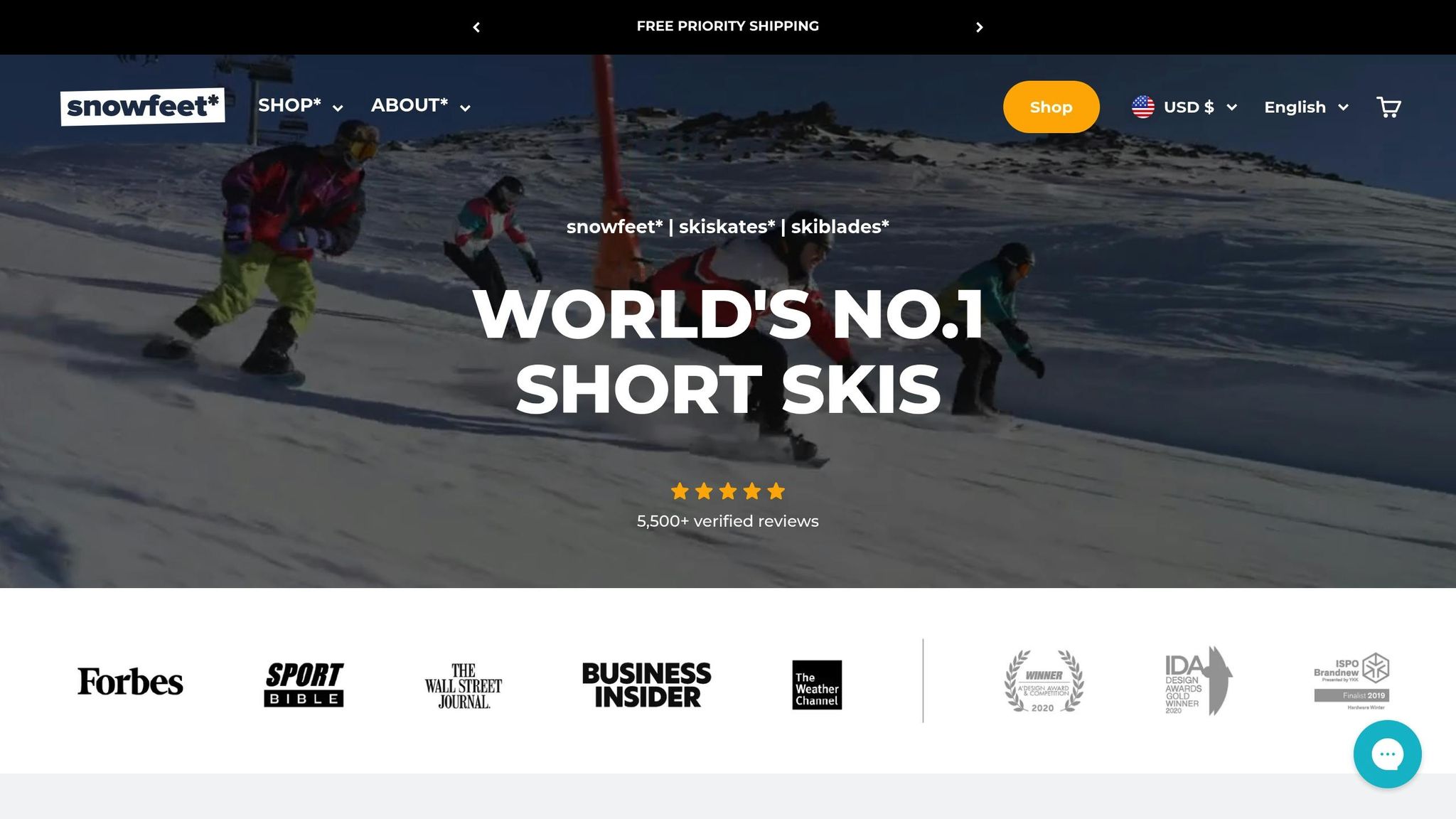
Quando sei sulle piste, la neve può essere imprevedibile come le previsioni del tempo. E diciamolo, l'attrezzatura sbagliata può trasformare una giornata fantastica in una frustrante. Ecco dove entra in gioco Snowfeet*. Questi prodotti compatti e innovativi sono progettati per affrontare le sfide che gli sci lunghi tradizionali e gli snowboard spesso incontrano. Ecco perché scegliere più corto potrebbe cambiare il modo in cui pensi agli sport sulla neve.
Vantaggi degli Skiblades e Skiskates Snowfeet*
I prodotti Snowfeet* si distinguono perché sfidano la mentalità consolidata del "più lungo è meglio". Mentre marchi come Rossignol, K2 e Salomon hanno perfezionato sci più lunghi, Snowfeet* adotta un approccio completamente diverso - e funziona.
- Precisione e Agilità: Con Snowfeet*, puoi fare curve rapide e decise su qualsiasi tipo di neve. A differenza degli sci tradizionali da 170–180 cm che richiedono movimenti ampi e larghi, il design più corto di Snowfeet* ti dà controllo e adattabilità, anche quando il terreno cambia a metà discesa.
- Compatti e Portatili: Con soli 44 cm, gli Skiskates possono entrare nello zaino. Niente più lotte con attrezzature ingombranti - puoi portarli facilmente in posti remoti senza problemi.
- Facile da Imparare: Che tu sia un principiante o uno sciatore esperto, i prodotti Snowfeet* sono semplici da imparare. Puoi padroneggiarli in poche ore, a differenza degli sci tradizionali che richiedono più tempo e impegno per prendere confidenza.
- Usa i Tuoi Scarponi: Dimentica l'acquisto di costosi scarponi da sci specializzati. Snowfeet* funziona con i tuoi normali scarponi invernali, risparmiandoti sia denaro che il fastidio di attrezzature extra.
Queste caratteristiche rendono Snowfeet* una scelta versatile per ogni tipo di neve e terreno. Approfondiamo i dettagli dei loro modelli.
Caratteristiche e Specifiche dei Modelli Snowfeet*
Ogni modello Snowfeet* è progettato pensando alla portabilità e alle prestazioni, offrendo un'alternativa fresca all'attrezzatura tradizionale. Ecco una panoramica della loro gamma:
- Snowfeet Mini Ski Skates (38 cm) – A 250$, sono perfetti per principianti su terreni misti. Il loro design leggero li rende reattivi e riduce l'affaticamento rispetto agli sci più pesanti.
- Snowfeet PRO (50 cm) – Prezzo 275$, questo modello affronta con facilità condizioni più difficili. Gli attacchi regolabili ti permettono di usarli sia con scarponi invernali che con scarponi da snowboard, offrendoti flessibilità.
- Skiskates (44 cm) – Per 575$, ottieni una costruzione con anima in legno che bilancia flessibilità e stabilità. Questi eccellono su ghiaccio e fanghiglia, dove gli sci tradizionali potrebbero risultare lenti.
- Skiblades (65 cm) – A 635$, offrono un'eccellente stabilità nella neve profonda mantenendo l'agilità necessaria per manovre rapide.
- Modelli da 99 cm – Sia la versione regolare che quella POWDER sono al prezzo di 675$. La versione POWDER è pensata per neve leggera e soffice, mentre il modello regolare è abbastanza versatile per piste battute e percorsi fuori pista.
- Sci Corti da 120 cm – A 775$, offrono una sciata simile a quella degli sci tradizionali ma con tutti i vantaggi di un design più corto.
Sci Corti vs Sci Lunghi Tradizionali
Quando confronti gli sci corti Snowfeet* con gli sci lunghi tradizionali, i vantaggi diventano evidenti, specialmente in condizioni di neve variabile.
- Curve Più Facili: Gli sci più corti rendono l'inizio delle curve senza sforzo. Con gli sci lunghi tradizionali, come quelli di Dynastar o Elan, serve più forza e precisione per iniziare una curva - cosa che può essere complicata in condizioni difficili. I prodotti Snowfeet* rispondono a piccoli spostamenti di peso, permettendoti di mantenere il controllo con meno sforzo.
- Migliore Equilibrio: Sebbene gli sci lunghi possano sembrare più stabili, in realtà possono amplificare l'instabilità sulla neve irregolare. Gli sci più corti abbassano il centro di gravità, offrendoti un controllo migliore e riducendo il rischio di perdere l'equilibrio.
- Controllo della Velocità: Gli sci lunghi possono risultare opprimenti, soprattutto quando la neve è imprevedibile. I prodotti Snowfeet* ti permettono di gestire la velocità naturalmente con curve più strette, così non ti sembra di scendere a tutta velocità senza freni.
- Meno Affaticamento: Gli sci tradizionali possono essere pesanti e faticosi da manovrare, specialmente dopo una giornata intera sulle piste. I prodotti Snowfeet* sono più leggeri, il che significa che puoi fare più discese senza sentirti esausto.
In definitiva, Snowfeet* offre un approccio nuovo allo sci, rendendolo più facile, più portatile e molto più divertente, qualunque cosa la neve ti riservi.
sbb-itb-17ade95
Tecniche di Sci Sicure per Ogni Tipo di Neve
Per sciare con sicurezza in qualsiasi condizione di neve, devi adattare la tua tecnica a ciò che hai sotto i piedi. Analizziamo i migliori approcci per i diversi tipi di neve.
Neve a Crosta: Padroneggiare il Controllo del Bordo e le Curve
La crosta di neve può essere una delle condizioni più difficili da affrontare. Tutto sta nel mantenere il controllo quando la superficie dura cede a una neve più morbida sotto. Per gestire la crosta, mantieni una posizione centrata e leggermente in avanti e concentrati su curve rapide e decise invece di archi lunghi e ampi. Questo ti aiuta a rimanere equilibrato e pronto alle sorprese.
Usare Snowfeet* Skiblades (65 cm) può fare una grande differenza. La loro lunghezza più corta rende le curve più veloci e richiede meno sforzo rispetto agli sci tradizionali. Inoltre, con meno superficie dello sci a contatto con la neve irregolare, è meno probabile perdere l'equilibrio.
Ecco la chiave: impegnati completamente in ogni curva. Movimenti graduali qui non bastano. Snowfeet* Skiblades ti danno un feedback immediato, così sentirai quando la crosta inizia a cedere e potrai reagire all'istante. Se la crosta cede, evita di inclinarti indietro - è un errore comune. Invece, resta in avanti e inizia subito la curva successiva. Il design compatto dell'attrezzatura Snowfeet* rende il recupero più veloce e fluido rispetto agli sci più lunghi.
Neve POWDER: Trovare Equilibrio e Fluidità
La neve POWDER è il sogno di ogni sciatore, ma richiede una mentalità completamente diversa. Il trucco è restare centrati e lasciare che la neve lavori con te, non contro di te. Pensa a movimenti fluidi e morbidi, non aggressivi.
Mantieni una posizione eretta, distribuisci il peso equamente su entrambi gli sci e punta a movimenti dolci e armoniosi. È quasi come fare surf sulla neve - rilassati e lascia che ti trasporti.
Per il POWDER profondo, Snowfeet* POWDER (99 cm) è una rivoluzione. Questi sci più corti ti aiutano a galleggiare senza sforzo, evitando il problema della punta che affonda tipico degli sci più lunghi. Per controllare la velocità, concentrati sulla forma delle curve. Movimenti fluidi e ritmici mantengono il tuo slancio costante e ti permettono di scivolare con facilità.
Non inclinarti indietro - potrebbe sembrare la mossa giusta, ma ti farà affondare e perdere il controllo. Invece, tieni le mani in avanti e sposta il peso con delicatezza. Durante le curve, premi leggermente sullo sci esterno, poi torna al centro. Il design reattivo di Snowfeet* POWDER ti aiuta a passare senza sforzo da una curva all'altra, mantenendoti sempre sopra la neve.
Terreno Misto: Adattarsi al Volo
Il terreno misto ti mette alla prova con tutto: neve dura, neve soffice, crosta e forse anche ghiaccio - tutto in una sola discesa. Per affrontare questo, ti serve un'attrezzatura progettata per aggiustamenti rapidi. Snowfeet* Skiskates (44 cm) sono perfetti per il lavoro.
Il segreto del terreno misto è leggere la neve davanti a te. Osserva i cambiamenti di colore, consistenza o i segni lasciati da altri sciatori - questi indizi ti aiutano a prevedere cosa ti aspetta. Il controllo della velocità è fondamentale. Che tu debba rallentare sulla neve dura o aumentare la velocità sulla neve più morbida, Snowfeet* Skiskates ti permettono di adattarti rapidamente con curve strette o leggere frenate sui bordi.
Quando le condizioni cambiano, modifica subito la tua posizione. Per la crosta, resta centrato e dritto; per il POWDER, concentrati su movimenti fluidi e armoniosi; e per la neve dura, usa i tuoi bordi in modo più aggressivo. La compattezza degli Snowfeet* Skiskates rende queste transizioni molto più facili da gestire.
Il terreno misto richiede reazioni rapide. Snowfeet* Skiskates sono leggeri, così puoi fare quei movimenti in frazioni di secondo senza esitazione. Esercitati con curve veloci su piste battute per acquisire fiducia - esitare sulla neve imprevedibile può farti perdere l'equilibrio. Con l'attrezzatura Snowfeet*, sarai pronto per qualsiasi cosa la montagna ti riservi.
I migliori prodotti Snowfeet* per diverse condizioni di neve
Scegliere l'attrezzatura giusta per le condizioni della neve può fare la differenza nella tua giornata sulle piste. Snowfeet* offre una gamma di short skis e skiskates perfettamente adattati a diversi tipi di neve, assicurandoti di essere sempre pronto a dare il meglio.
Modelli Snowfeet* consigliati per tipo di neve
Per neve crostosa:
I Snowfeet Skiblades (65 cm)*, al prezzo di 635$, sono una scelta solida per neve crostosa e irregolare. La loro lunghezza ridotta ti offre un controllo rapido del bordo, riducendo il rischio di impuntamenti e aiutandoti a mantenere stabilità su superfici impegnative.
Per neve POWDER:
Quando si tratta di neve profonda, i Snowfeet POWDER (99 cm)* a 675$ sono la tua scelta ideale. La loro lunghezza maggiore bilancia galleggiamento e manovrabilità, permettendoti di scivolare senza sforzo mantenendo curve fluide e controllate.
Per terreni misti:
I Snowfeet Skiskates (44 cm)*, a partire da 575$, brillano in condizioni miste. La loro dimensione compatta e il nucleo in legno li rendono perfetti per navigare su neve dura, dossi morbidi o anche lastre di ghiaccio con facilità.
Per versatilità totale:
Se cerchi un tuttofare, i Snowfeet Skiblades (99 cm)* a 675$ sono una scelta eccellente. Gestiscono tutto, dalla neve profonda ai sentieri battuti, offrendo controllo preciso e adattabilità su vari terreni.
Per principianti:
Se stai iniziando, i Snowfeet Mini Ski Skates (38 cm)*, al prezzo di 250$, sono ideali per principianti e possono essere usati con normali scarpe invernali. Semplificano il processo di apprendimento, rappresentando un ottimo punto di partenza nella gamma Snowfeet*.
Queste opzioni offrono un'alternativa moderna all'attrezzatura tradizionale, rendendo più facile godersi le piste senza complicazioni.
Confronto tra Snowfeet* e sci e snowboard tradizionali
I prodotti Snowfeet* non si distinguono solo per la loro versatilità - offrono anche vantaggi evidenti rispetto agli sci e snowboard tradizionali.
Portabilità e comodità:
Gli sci tradizionali, spesso lunghi 170–180 cm, possono essere scomodi da trasportare. L'attrezzatura Snowfeet*, come i Mini Ski Skates, si infila comodamente in uno zaino. Anche i Short Skis (120 cm)*, al prezzo di 775$, sono molto più compatti, rendendo il trasporto e lo stoccaggio un gioco da ragazzi. Inoltre, sono perfetti per raggiungere quei posti remoti con neve dove l'attrezzatura ingombrante sarebbe un problema.
Curva di apprendimento e controllo:
Sci e snowboard tradizionali possono richiedere settimane (o mesi!) per essere padroneggiati. I prodotti Snowfeet*, con il loro design intuitivo e il baricentro più basso, rendono più facile apprendere le basi rapidamente. Ti sentirai più in controllo, anche in condizioni difficili.
Confronto dei costi:
Un set completo di sci tradizionali - sci, attacchi e scarponi specializzati - può rappresentare un grande investimento. I prodotti Snowfeet*, con prezzi che vanno da 250 a 775 dollari, funzionano con il tuo normale calzature invernali, offrendo un'alternativa più economica senza rinunciare al divertimento o alle prestazioni.
Peso e affaticamento:
Gli sci lunghi e pesanti possono stancarti rapidamente, soprattutto in condizioni difficili. L'attrezzatura Snowfeet* è leggera e meno faticosa per le gambe, così puoi goderti discese più lunghe senza sentirti esausto.
La vera svolta? I prodotti Snowfeet* ti permettono di adattarti al volo, gestendo senza problemi le condizioni di neve che cambiano - a volte anche durante la stessa discesa.
Conclusione: Sciata migliore con Snowfeet*
Affrontare condizioni di neve imprevedibili diventa molto più facile quando hai un'attrezzatura leggera, reattiva e progettata sia per la sicurezza che per il divertimento. Snowfeet* ha rivoluzionato il modo in cui pensiamo agli sport invernali, dimostrando che un equipaggiamento compatto può offrire un controllo e prestazioni eccezionali su ogni tipo di neve.
Che tu stia scivolando sulla crosta, tagliando attraverso il POWDER o navigando su terreni misti, Snowfeet* si distingue. Il suo design leggero aiuta a ridurre l'affaticamento, mentre il baricentro più basso ti offre un controllo migliore. Inoltre, rende l'adattamento alle condizioni variabili un gioco da ragazzi. Quando incontri una zona di POWDER su una pista battuta o punti ghiacciati, puoi gestire tutto senza dover ripensare la tua tecnica. Questa combinazione di controllo e flessibilità rende lo sci più fluido, sicuro e molto più divertente.
E non dimentichiamo la portabilità. L'attrezzatura Snowfeet* si infila comodamente in uno zaino, liberandoti dal fastidio di portapacchi e ingombranti sacche da sci. È perfetta per gite spontanee in montagna o per esplorare nuovi sentieri. Con un controllo del bordo migliorato, reazioni rapide ai cambiamenti della neve e facilità di manovra negli spazi stretti, Snowfeet* ti assicura di essere sempre pronto per la prossima avventura.
Snowfeet* guida la rivoluzione verso un futuro in cui sciare significa attrezzatura più intelligente, reazioni più rapide e puro divertimento sulle piste.
Domande frequenti
In che modo i prodotti Snowfeet offrono un controllo e una sicurezza migliori in diverse condizioni di neve rispetto agli sci tradizionali?
I prodotti Snowfeet sono pensati per offrirti un controllo migliore e maggiore sicurezza in ogni tipo di neve. Il loro design compatto li distingue dagli sci tradizionali. Essendo più corti, sono più facili da maneggiare, rendendo le curve rapide e i movimenti precisi un gioco da ragazzi - anche su terreni difficili come crosta, POWDER o neve mista. Questa maggiore agilità significa meno cadute e più fiducia, indipendentemente dal tuo livello di abilità.
Prendi ad esempio il Snowfeet PRO. È progettato con punte più alte e basi più larghe, che aiutano a migliorare la presa del bordo e rendono le curve più fluide. Questo è particolarmente utile quando le condizioni della neve sono imprevedibili. Che tu sia un principiante o semplicemente cerchi un'attrezzatura che possa gestire un po' di tutto, queste caratteristiche fanno una grande differenza. Inoltre, il design leggero e facile da usare di Snowfeet rende gli sport invernali più accessibili - e molto più divertenti - per tutti.
Qual è la differenza tra Snowfeet Skiblades e Skiskates, e come scelgo l'opzione migliore per il mio stile di sci?
Snowfeet Skiblades sono compatti, facili da trasportare e progettati per abbinarsi a scarponi invernali normali. Questo li rende una scelta eccellente per principianti o chiunque cerchi un modo semplice e divertente per scendere sulle piste. Grazie alla loro lunghezza ridotta, offrono agilità e controllo impressionanti, specialmente quando si affrontano condizioni di neve più difficili come crosta o POWDER.
Skiskates, invece, sono un po' più lunghi e hanno un'anima in legno, che conferisce una sensazione più vicina allo sci tradizionale. Sono comunque portatili e facili da gestire, ma funzionano con scarponi da sci o snowboard, offrendo maggiore flessibilità per quanto riguarda il calzare.
Se ami le curve giocose e esplorare la neve al tuo ritmo, Skiblades sono un'ottima scelta. Ma se cerchi un'atmosfera più classica da sci con il bonus della versatilità, Skiskates sono la soluzione ideale. Snowfeet offre anche modelli come il Snowfeet PRO, pensati per utenti avanzati che vogliono caratteristiche per il carving o anche per eseguire trick nei terrain park. Entrambe le opzioni sono apprezzate per essere portatili, facili da usare e per rendere lo sci più accessibile e divertente rispetto agli sci o snowboard tradizionali.
Posso indossare i miei scarponi invernali normali con i prodotti Snowfeet, e questo influirà sulle mie prestazioni sulle piste?
Sì, puoi usare i tuoi scarponi invernali normali o anche scarponi da snowboard con i prodotti Snowfeet. Questa configurazione li rende super comodi e molto più confortevoli rispetto agli scarponi da sci tradizionali, che a volte possono risultare pesanti o restrittivi.
La parte migliore? Usare i propri scarponi non compromette le prestazioni. Snowfeet sono progettati per affrontare diverse condizioni di neve - che sia POWDER, crosta o un mix di terreni. Offrono grande controllo e stabilità, rendendoli una scelta solida sia per principianti che per sciatori esperti. E diciamolo, restare con gli scarponi con cui sei già a tuo agio rende le tue uscite invernali molto più piacevoli.
Post correlati del blog
- Sicurezza con i mini sci: lista di controllo per principianti
- Come scegliere gli sci per principianti del backcountry (prima la sicurezza!) - 2025
- Trappole del terreno nello sci fuori pista: cosa sono e come evitarle
- Come scegliere una linea sicura per lo sci fuori pista: consigli per valutare il rischio







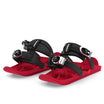
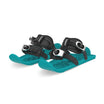












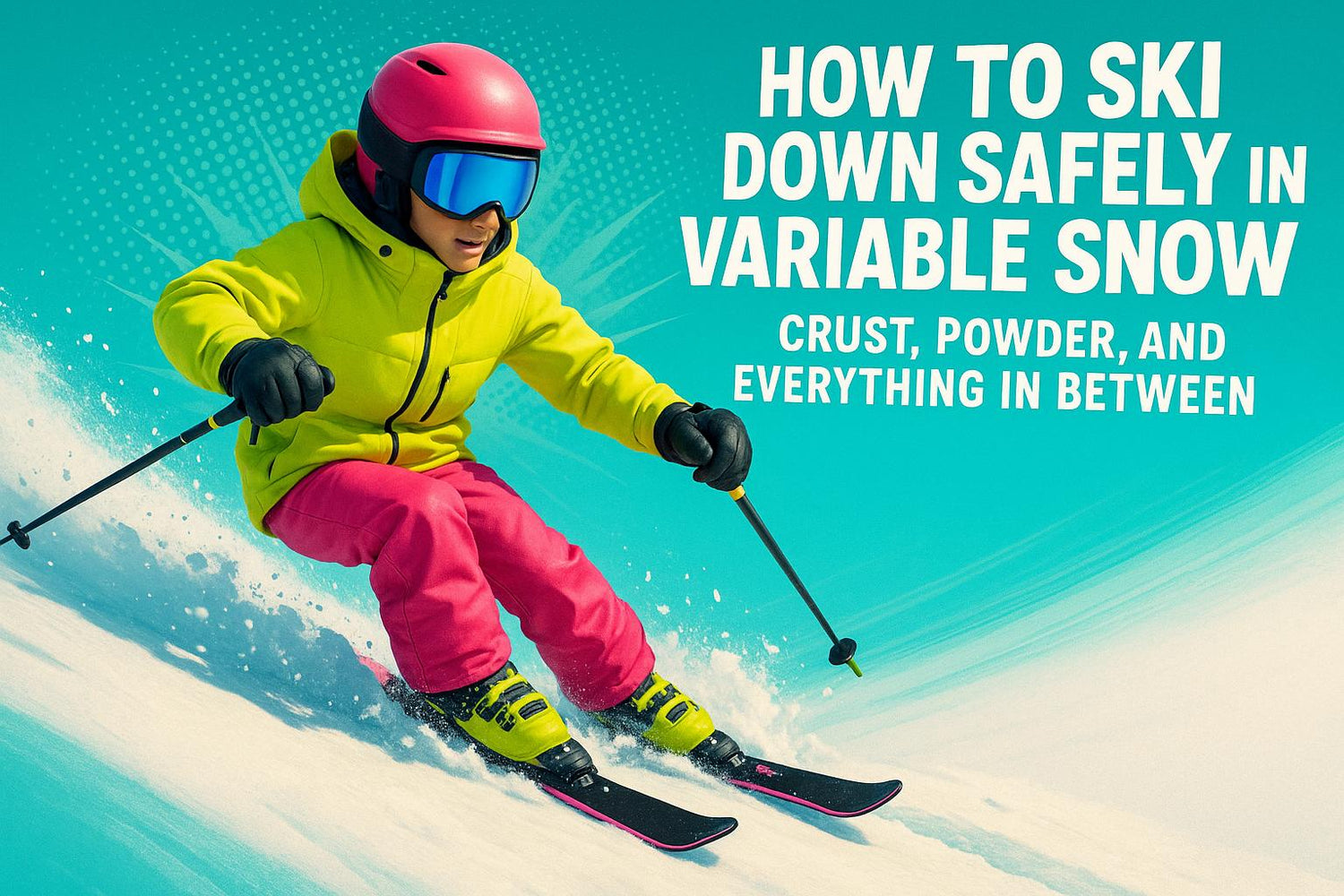
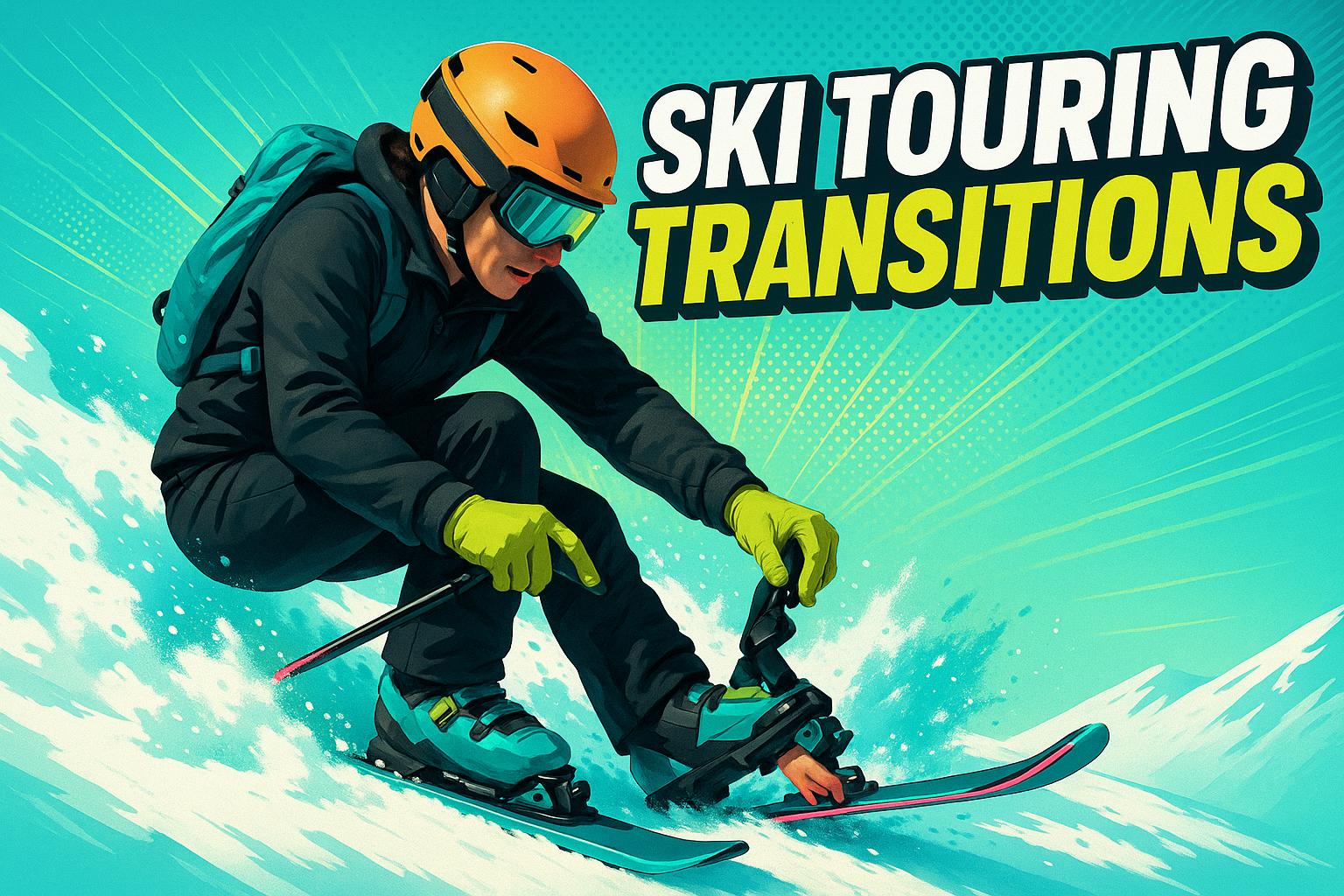
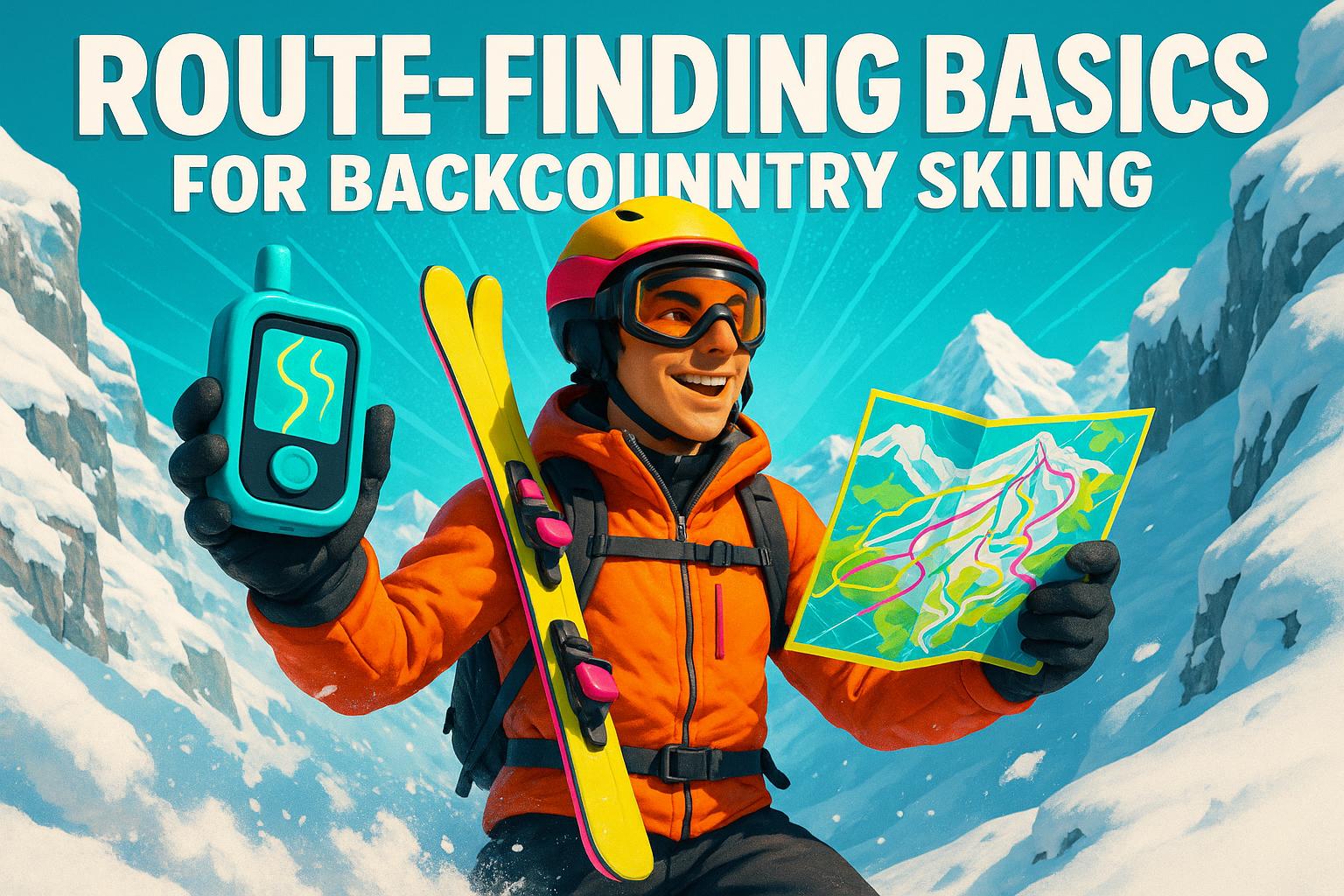




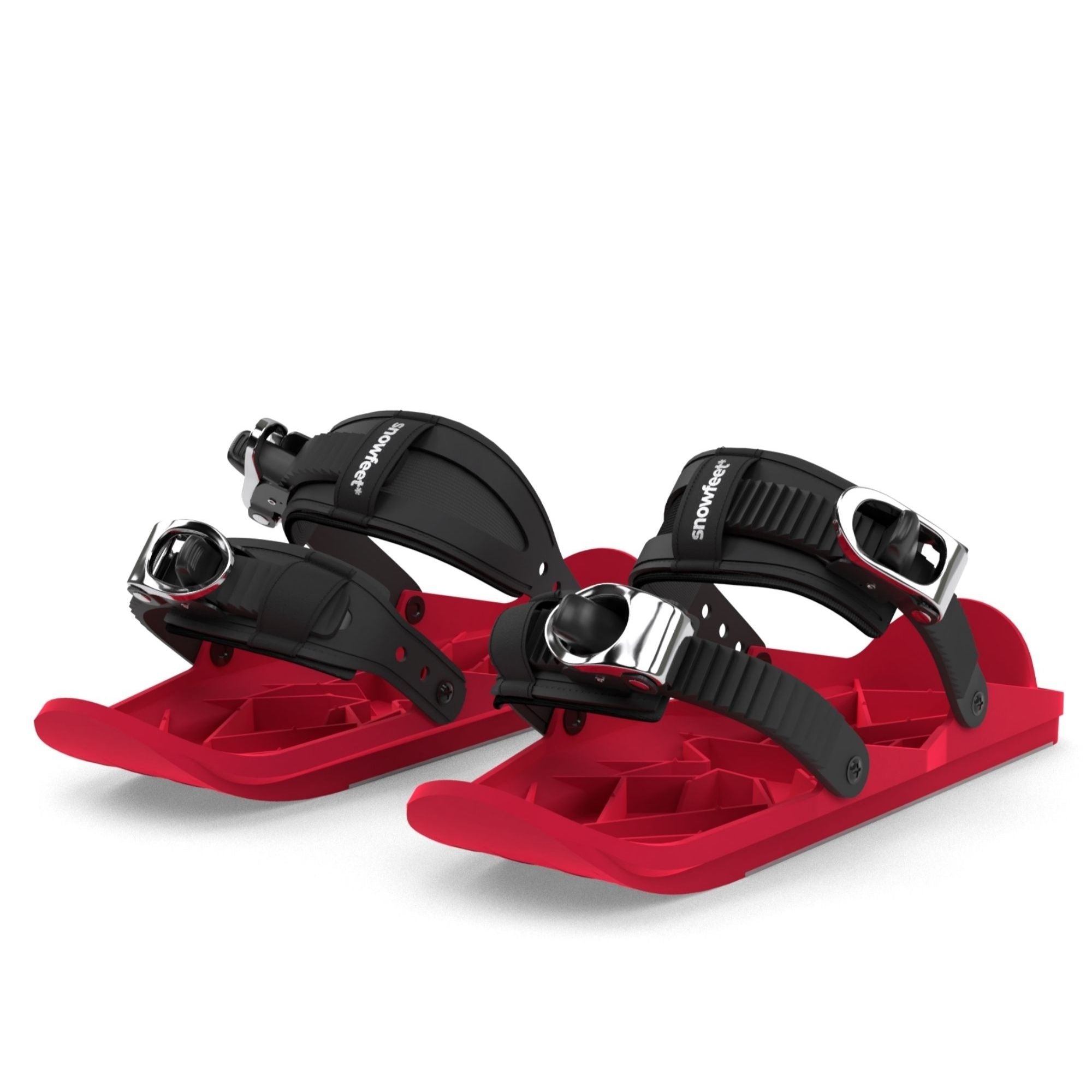
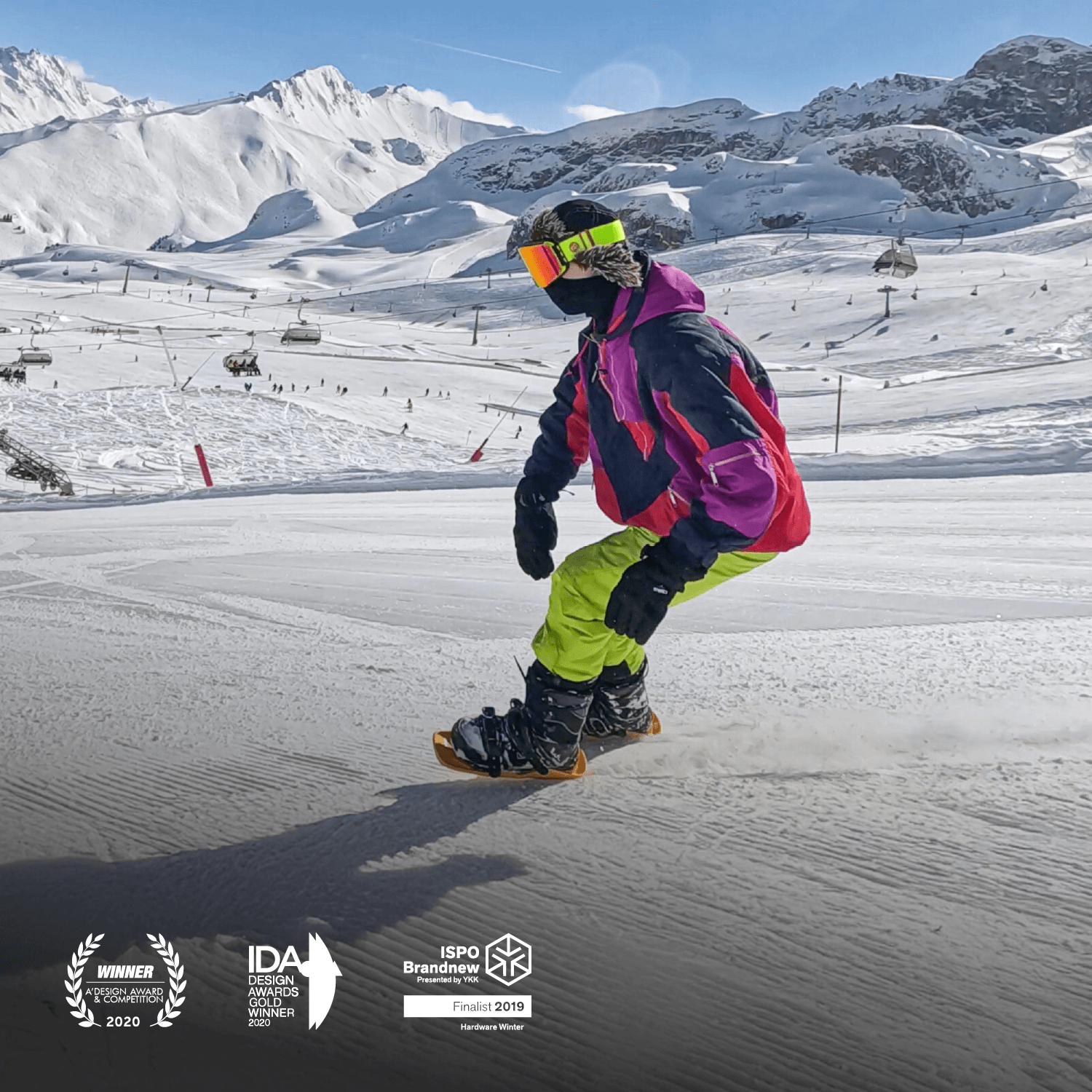




Lascia un commento
Questo sito è protetto da hCaptcha e applica le Norme sulla privacy e i Termini di servizio di hCaptcha.